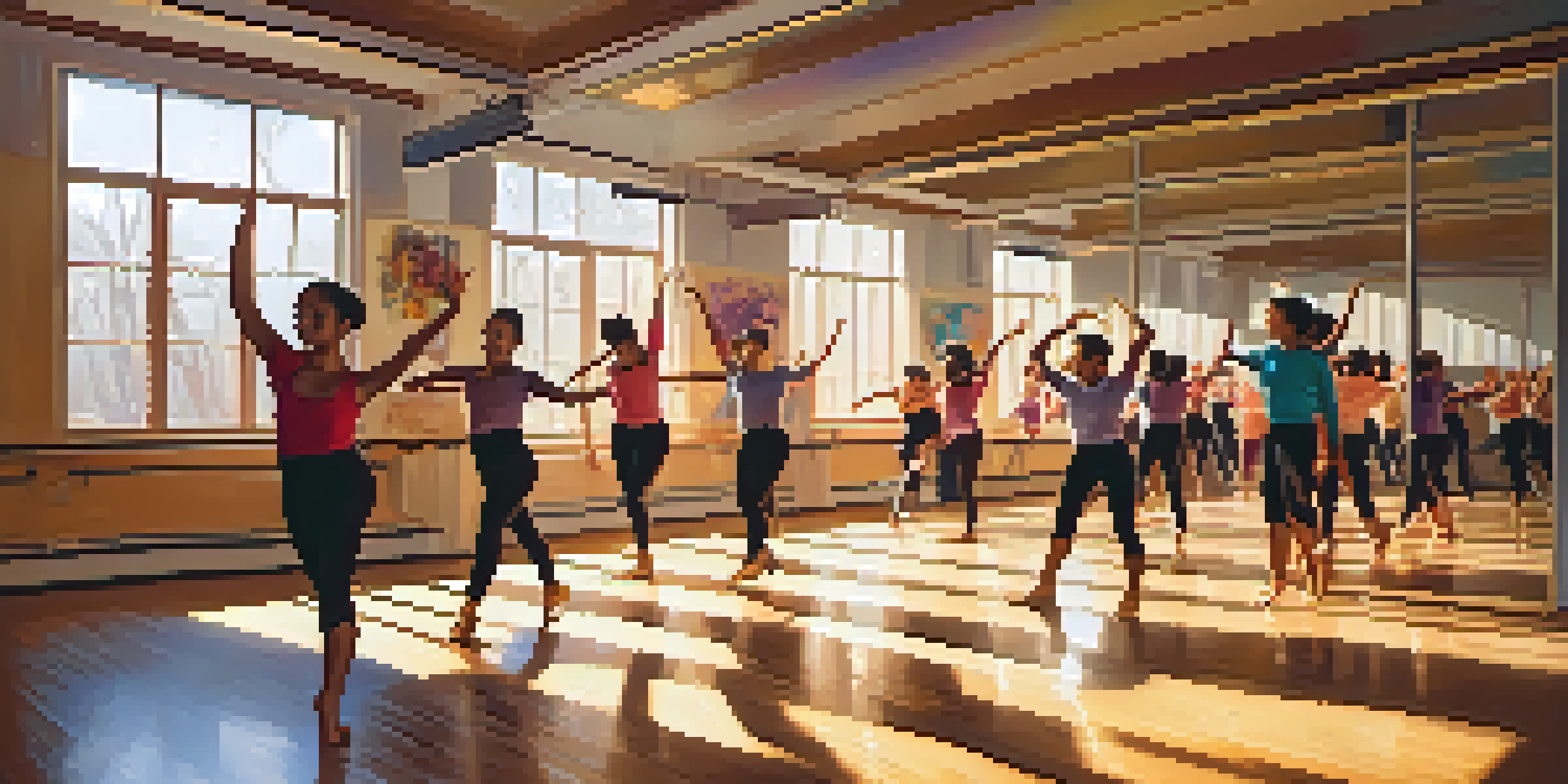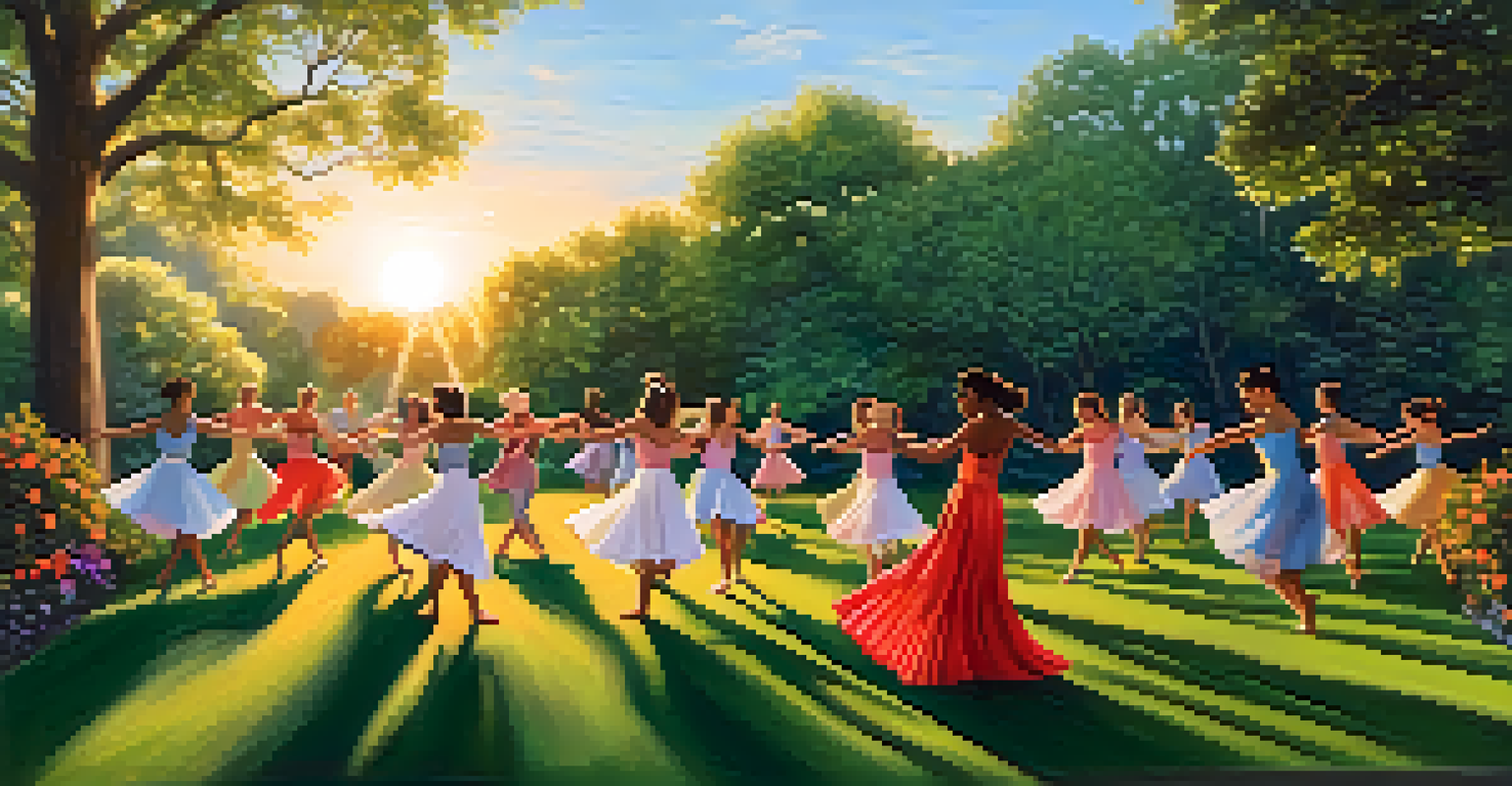Evaluating Student Engagement in Dance Education Programs

Understanding the Importance of Student Engagement
Student engagement is a vital component of any educational program, including dance education. It refers to the level of interest, motivation, and involvement students display in their learning process. When students are actively engaged, they are more likely to retain information, develop skills, and enjoy the experience, which ultimately leads to better outcomes.
Engagement is the cornerstone of learning; it ignites the passion that drives students to explore and excel.
In dance education, engagement can manifest through participation in classes, enthusiasm for performances, and willingness to collaborate with peers. This engagement not only enhances individual learning but also fosters a supportive community where students can thrive. Understanding this importance helps educators prioritize engagement strategies in their curriculum.
Moreover, recognizing the factors that influence engagement—such as teaching methods, classroom environment, and student interests—can guide educators in creating a more effective dance program. By investing in engagement, instructors can cultivate a lasting love for dance among their students.
Identifying Indicators of Student Engagement
To evaluate student engagement effectively, educators need to identify clear indicators. These can include attendance rates, participation in class discussions, and the quality of student work. Observing these behaviors provides valuable insights into how engaged students are with the material.

Another key indicator is student feedback, which can be gathered through surveys or informal discussions. Asking students about their experiences, challenges, and interests can reveal their level of engagement and help educators adapt their teaching strategies. Listening to student voices is crucial in understanding their needs and motivations.
Engagement Boosts Learning Outcomes
Active student engagement enhances retention and skill development in dance education.
Additionally, performance in dance classes can serve as an indicator of engagement. Students who show enthusiasm and improvement in their skills are often more engaged, while those who struggle may need extra support or encouragement. By focusing on these indicators, educators can tailor their approach to foster greater engagement.
Utilizing Observations to Gauge Engagement
Observations are a powerful tool for assessing student engagement in dance programs. Educators can watch students during classes, noting their participation levels, interactions with peers, and overall enthusiasm. This qualitative data can provide a deeper understanding of engagement beyond mere attendance.
The best way to predict the future is to create it through collaboration and active participation.
For instance, noticing which students actively contribute to group activities or take initiative in choreography can highlight those who are deeply engaged. Conversely, observing disengaged behaviors, like distraction or reluctance to participate, can signal a need for intervention. Regular observations allow educators to adjust their teaching methods in real-time.
Moreover, creating a supportive environment where students feel comfortable expressing themselves can enhance engagement. By fostering an atmosphere of trust and encouragement, educators can inspire all students to participate fully, making observations even more meaningful.
Incorporating Student Feedback for Improvement
Collecting student feedback is essential for evaluating engagement in dance education. By using surveys, suggestion boxes, or one-on-one discussions, educators can gain insight into what students enjoy and what challenges they face. This feedback can guide improvements in teaching methods and curriculum design.
For example, if students express a desire for more diverse dance styles or performance opportunities, educators can adapt their lesson plans accordingly. This responsiveness not only boosts engagement but also shows students that their opinions are valued. When students feel heard, they are more likely to invest in their learning.
Collaboration Fosters Creative Growth
Working together in dance promotes camaraderie and sparks creativity among students.
Additionally, creating opportunities for students to share their feedback regularly helps cultivate a culture of open communication. This ongoing dialogue can lead to a more dynamic and engaging dance education program tailored to meet student needs and interests.
Creating Collaborative Learning Environments
Dance education thrives in collaborative environments where students feel a sense of belonging. Encouraging teamwork and peer support can significantly enhance engagement levels. When students work together on choreography or performances, they develop camaraderie that fosters motivation and commitment.
Group activities not only build relationships but also allow students to learn from each other. Sharing ideas and techniques can spark creativity and deeper understanding of dance concepts. In such environments, students are more likely to take risks and explore their artistic expressions.
Moreover, incorporating collaborative projects into the curriculum can cater to diverse learning styles. Some students may excel in solo performances, while others shine in group settings. By valuing both, educators can create a more inclusive and engaging dance program.
Setting Clear Goals to Enhance Engagement
Setting clear, achievable goals is essential for promoting student engagement in dance education. Goals provide students with a sense of direction and purpose, helping them understand what they are working towards. When students know what is expected of them, they are more likely to stay motivated and engaged.
For instance, educators can establish short-term goals for skill development and long-term goals for performances. Celebrating achievements, no matter how small, reinforces the importance of these goals and encourages continued effort. This celebration of progress can boost students' confidence and drive.
Technology Enhances Accessibility
Leveraging digital tools makes dance education more interactive and accessible for students.
Furthermore, involving students in the goal-setting process can enhance their commitment. When students have a say in their learning objectives, they are more likely to feel ownership over their education, leading to higher engagement levels. Together, educators and students can outline clear paths to success.
Leveraging Technology to Boost Engagement
In today's digital age, leveraging technology can significantly enhance student engagement in dance education. From online classes to social media platforms, technology offers new avenues for learning and expression. Incorporating these tools can make dance education more accessible and exciting for students.
For example, using video recording software allows students to review their performances and track their progress over time. This self-assessment encourages reflection and motivates students to improve. Additionally, platforms like Instagram or TikTok can serve as creative outlets for students to share their dance journeys with a broader audience.

Moreover, technology can facilitate collaborative projects, even when students are not physically together. Virtual rehearsals and online discussions provide opportunities for creative collaboration, fostering engagement in unique ways. By embracing technology, educators can create a more dynamic and interactive dance education experience.